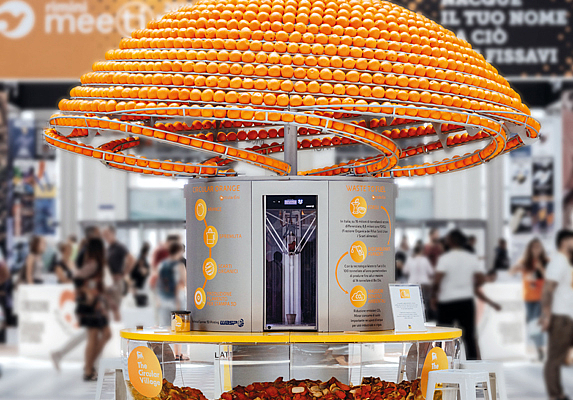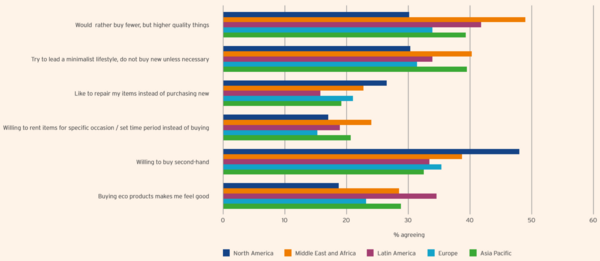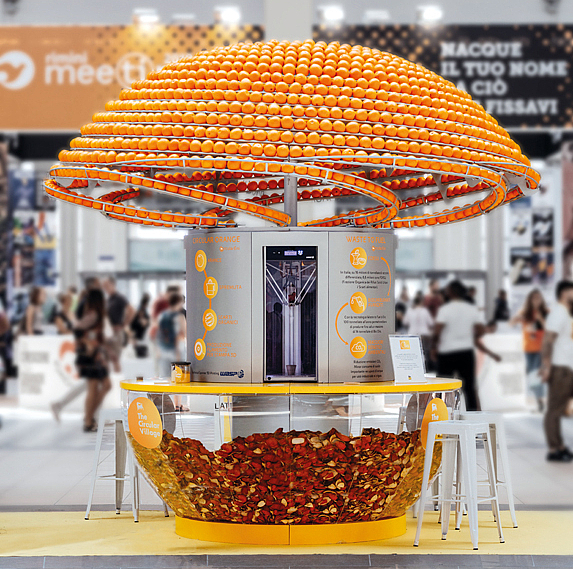
“Convenience and personal control are the core themes connecting these trends in 2020,” says Gina Westbrook, Director of Consumer Trends at Euromonitor International. “Consumers are putting themselves first as they look for ways to simplify their lives.”
In summary, the top 10 global consumer trends in 2020 are:
- Beyond Human: Embracing artificial intelligence for automation and convenience.
- Catch Me in Seconds: Seeking quick, concise and multisensory content for instant gratification.
- Frictionless Mobility: Choosing transportation methods based on individual preferences for a seamless travel journey.
- Inclusive for All: Focusing on diversity and accessibility for everyone.
- Minding Myself: Prioritising mental health and searching for products positioned to address specific well-being needs.
- Multifunctional Homes: Doing everything from the comfort of home.
- Private Personalisation: Balancing the desire for optimised experiences with concerns about sharing personal data.
- Proudly Local, Going Global: Valuing home culture and products tailored to local tastes and preferences.
- Reuse Revolutionaries: Finding alternatives to single-use products to reduce environmental footprint and waste.
- We Want Clean Air Everywhere: Advocating for clean cities and a carbon-free world.
Many of these consumer trends hold relevance also for the wider consumer packaging industry and indeed for the PET value chain. However, it is sustainability that continues to hold most resonance for PET development as for the wider plastics industry too; allied to this from Euromonitor’s 2020 Top 10 Consumer Trends, we can single out ‘Reuse revolutionaries’ as most impactful.
2020 concerns about carbon footprint brings forth ‘Reuse Revolutionaries’
Summary: Taking a closer look at the rationale for the ‘Reuse Revolutionaries’ trend, this is a follow-on to ‘I want a plastic-free world’, one of Euromonitor’s global consumer trends of 2019. It is about consumers’ push for a wastefree society, which continues to gain momentum. In 2020, this is nuanced into opportunities for new business models and sustainability-driven innovations from today’s sustainability leaders as they seek to instil re-use, to reduce dependence on single-use products and packaging.
Increased environmental awareness is a key driver for the Reuse Revolutionaries trend, especially for younger generations who are prioritising experiences over ownership. New business models that avoid waste generation appeal to a growing number of ethical consumers who strive for sustainability through use of longer-lasting products.
The milkman returns
The days of businesses taking unlimited materials from nature and giving little back are coming to an end. The linear economy based on ‘take, use, dispose’ is not working. Over 89 billion tonnes of materials were extracted from the global economy in 2018, according to Euromonitor International. However, only 9% of materials were being recirculated, meaning 91% were wasted, according to the 2019 Circularity Gap Report. This inefficient model, where non-renewable resources are underpriced, overexploited, transported, used and discarded around the world, has devastating consequences for people and the planet.
Reuse Revolutionaries are now looking into ways to reduce their footprint with disruptive business models becoming mainstream. Companies are selling spare parts, teaching consumers how to repair products and launching buy-back schemes to recover materials. Digital technologies are bringing back the milkman with sustainable doorstep deliveries offering much more than milk. The reuse economy approach can save materials, prevents valuable products from going to landfill, reduces price volatility of raw materials, decreases supply chain risks and boosts resource efficiency.
Consumers seek reusable and convenient goods
According to Euromonitor International’s Lifestyles Survey 2019, 60% of consumers are worried about climate change and 54% think they can make a positive contribution in the world with their purchases. As environmental awareness increases, consumers look for alternative eco-friendly products. However, more sustainable products often come with a premium price, and not all consumers are willing to pay more. While the appeal of second-hand products is on the rise, convenience and affordability still play a role in consumers’ purchasing decisions.
Eco-anxiety is creating greener expectations. Interest in sustainable products peaks after the age of 30, in line with increased disposable income and earning potential. This interest is also usually higher among consumers with children. However, there is no onesize-fits-all solution. Understanding which solution works best in specific markets and consumer types is essential for companies with strong sustainability commitments. While consumers in the Middle East and Africa and Latin America prefer to buy longer-lasting products, the minimalist movement is strong in Asia and second-hand products are becoming attractive in Western markets, such as the US and Europe.
Consumers in wealthy European countries, such as Sweden, Denmark or Germany, are more open to repairing, renting and buying second hand. In the UK, second-hand shopping and repair services are common, but renting is still unattractive. To succeed in the UK, the rental market needs to educate consumers and put incentives in place.

Fig 1: Attitudes and motivations and shopping references by region. Source: Euromonitor Internationals’s Lifestyles Survey (2019)
Brand responses to the ‘Reuse Revolutionaries’ trend
KitKat (Nestlé) Japan
In the summer of 2019, Nestlé Japan announced the launch of recyclable paper packaging to replace plastic wrappers for KitKat products. The packaging also contains instructions on how to make an origami paper figure, inspiring consumers to have fun and reuse the packaging. Flexible plastic packaging is losing popularity due to its environmental impact on oceans. Companies are launching new formats that claim to be more environmentally friendly.
Algramo Chile
Founded in 2013, Chilean startup Algramo sells products by the gram using reusable and smart packaging. Algramo incorporates RFID technology into its reusable packaging called “packaging as a wallet,” allowing consumers to add money to their Algramo app and pay cashless upon refill. This appeals to lowresource families since costs are about 30% lower on a per unit basis. Algramo’s by the gram refillable system enables these consumers to pay the same per unit cost, regardless of how much product they purchase. With single-use plastics in the spotlight, companies are rethinking the way they offer and deliver products.
Ecover (SC Johnson) Europe
Ecover, owned by SC Johnson & Son, launched “Too Good to Waste,” a hand dishwashing liquid detergent made from beer waste. This solution follows a global wave of interest in applying circular economy principles to reduce waste, save resources and eliminate pollution. Produced in Ecover’s newly certified TRUE Platinum zero-waste factory in Belgium, the detergent contains 25% water and ethanol from the beer brewing process. The bottle and cap are also made from 100% and 50% postconsumer recycled plastics, respectively. Using waste as a new resource is becoming more common. As the global population approaches nine billion in 2030, demand for basic products is expected to increase, putting pressure on existing natural resources. Businesses are looking at waste materials as a potential source of ingredients.
Feel the Peel (Carlo Ratti) Italy
Feel the Peel is a circular juice bar that uses orange peels to make 3D-printed cups. The prototype cuts the oranges and separates the peel to manufacture a disposable bioplastic cup used to drink the freshly squeezed juice. After consumption, the cup is then recycled. In the future, the company aims to include new functions like printing fabric for clothing from the orange peel. With younger generations valuing experiences, this innovation is not only greener, but also attractive as it allows consumers to print their own cup using their own waste. Technology that optimises the use of materials, producing much less waste, can disrupt the way products are manufactured.

Fig 1: Feel the peel (Photo credit: Carlo Ratti)
Circularity is the new reality
We live in a world more mindful of our environment with a growing interest in reducing our footprint. Concerns about the levels of consumerism and how this relates to waste, climate change and air pollution show no signs of subsiding. Plastic pollution and packaging waste are an important part of the driving force to reuse. Reuse Revolutionaries are keen to do their part to keep waste out of landfills and the natural environment.
We know that responsible handling of plastic packaging post-use has not corresponded with the annual rise in usage of plastic. Brands, packagers and policymakers are however helping reduce waste around the world by committing to 100% plastic recyclability and incorporating design for recycling initiatives.
The Reuse Revolutionaries trend embodies two themes: recycle and refill. For plastic, first, the recycling of plastic for repeated use is an important facet to reduce reliance on fossil fuels and enable a lower carbon footprint. Second, refillable containers are rising, as seen in the expansion of free water refill stations and reusable packaging initiatives from foodservice to retail establishments. Circularity is certainly here to stay. Today, the Reuse Revolutionaries trend signals this search for a waste-free future, for safety of the planet and human health. Brands and indeed entire consumer goods value chain needs to be mindful of these needs in their product and packaging development”.
Outlook
Thanks to the substantial impact sustainability has on brand perception, businesses are launching subscription models and reusable or refillable options to meet ethical consumer demands. Brands will need to find the balance between sustainability and convenience as consumers still rank efficacy, value and aesthetics as desired characteristics. There is a need to educate and incentivise consumers to switch to reusable or refillable options when it comes to things like packaging. As more businesses integrate sustainable resources into their products, it will become less of a competitive advantage and more of a must-have.
The comPETence center provides your organisation with a dynamic, cost effective way to promote your products and services.

magazine
Find our premium articles, interviews, reports and more
in 3 issues in 2025.



